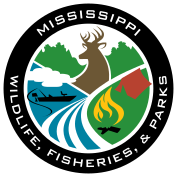
Written by: Chandler Strickland
Edits by: Pierce Young
A chainsaw is an incredibly versatile tool for landowners and hunters looking to improve wildlife habitat. From creating food plots to thinning forests and even orchestrating wildlife movement across your property, a chainsaw can help shape your land in ways that benefit wildlife. However, it’s also one of the most dangerous tools in a landowner’s toolbox, particularly when cutting large trees. Improper use can lead to serious injuries or property damage.
One common mistake when cutting large trees is to make a felling cut and continue cutting until the tree falls. This approach can create several hazards, including:
- Pinching the saw – If the tree shifts or falls unevenly, the chainsaw blade can become trapped, which can cause kickback or damage to the saw.
- Unpredictable fall direction – Without proper planning, a tree can fall in an unexpected direction, putting you at risk.
- Trunk splitting – Trees under tension may split or “barber chair,” causing large sections of wood to kick back toward the cutter.
Safe Tree-Felling Techniques
To minimize these risks, planning is key. Follow these steps to safely cut large trees:
- Plan the fall – Determine the desired direction for the tree to fall and clear the area of obstacles. Make sure you have a clear escape route in case the tree behaves unexpectedly.
- Make a notch cut – On the side of the tree facing the direction you want it to fall, cut a notch about one-third of the way into the trunk. This notch will help guide the tree as it falls.
- Create the hinge – Begin the felling cut on the opposite side of the tree, slightly above the bottom of the notch. Leave a small uncut section, called the hinge, which will control the tree’s fall.
- Stay alert – Even with proper technique, a leaning tree may not fall exactly as planned. Constantly observe the tree and surrounding area while cutting.
Using a Chainsaw to Enhance Wildlife Habitat
For hunters and land managers, chainsaws can be used to thin dense stands of timber, open up sunlight for understory growth, and create natural browse for deer. When used carefully, they are a powerful tool for habitat management. Take your time, plan each cut, and always prioritize safety.
By thoughtfully incorporating chainsaw work into your property management plan, you can improve wildlife habitat, increase wildlife productivity, and create more enjoyable hunting experiences — all while keeping yourself and others safe.
For more information on wildlife habitat management, visit our website at